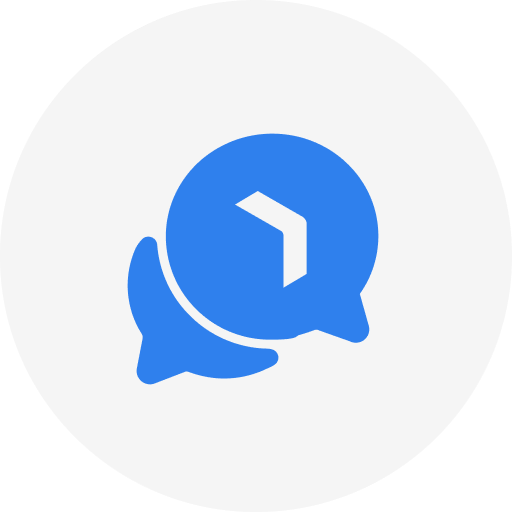Ensuring your agents’ time on the clock is time well-spent starts with forecasting, scheduling, quality management and individualized training
Agents may sit near the bottom of a contact center’s organizational chart, but they’re the public face of your organization, front-and-center. From the moment a customer initiates contact, the agent directly shapes their experience — for better or worse.
In that sense, everyone else in the contact center hierarchy and every process and tool in place act as a supporting cast. Their purpose is to increase call center productivity and equip agents to deliver the most value possible to the customer and the organization, consistently and efficiently — every shift, every day.
How to assess call center agent productivity and performance
When we address the topic ‘improving call center agent performance’ we’re talking about more than just managing their time well; we’re talking about making every minute count. There’s a difference.
A ‘making every minute count’ approach surely needs to focus on the agent’s schedule. After all, job-one for contact center managers is ensuring enough agents with the right skill sets are on-hand to process the call, email and chat volume at any given moment. That said, you also must recognize the importance of agent attitude and aptitude. Those two attributes influence the time an agent spends on a customer interaction, the degree of control they exert over it and its ultimate outcome.
‘Making every minute count’ emphasizes training fueled by Quality Management (QM) and Speech Analytics insights. It begins by asking questions, like:
- Is the agent spending too much or too little time on each interaction? Why?
- Is the agent bored because they’re fielding too few customer inquiries or burned out by fielding too many?
- Is the agent resolving the customer issue the first time? Why or why not?
Increase call center productivity with forecasting and scheduling
Agent scheduling is no easy task, given the dynamic nature of demand throughout a day or week. It gets even more complex with multi-skill agents.
One metric for gauging scheduling efficacy and call center productivity is Agent Occupancy. How busy are agents throughout their shifts? Are they 100 per cent occupied, moving from call to call with no breaks in between? Or are some agents sitting idle, waiting for the phone to ring? Occupancy is a vital metric; too high or too low — burnout or boredom — it impacts agent attitudes.
That makes sense, but you might wonder how forecasting and scheduling affects a call center agent’s aptitude. It’s simple; if your WFM tool has multi-channel/multi-skill scheduling capabilities, managers can factor the agent’s skill set into their queue assignment. For instance, some may be better suited to the chat queue than they are to phones. One may be skilled at handling complex customer inquiries, while another is more suited to processing simpler transactional interactions.
Your WFM tool should be able to optimize agent occupancy and thus increase call center agent productivity by accessing historical data collected by your contact center platform, providing a factual basis for predicting the number of agents needed in a particular queue for a given period.
Optimize agent’s time with Quality Management and Analytics
The ability to monitor agent/customer interactions and access targeted insights for coaching and performance evaluations is essential to developing agent aptitude, and the kind of individualized training they need is only feasible if managers and supervisors can review and analyze a large number of interactions. Automation is key.
An agent who chronically spends too much time on calls, for instance, might lack adequate product knowledge to solve the problem and spends too much time in the knowledge base. Or, perhaps, the agent doesn’t have proper control over the conversation, and it goes off on a tangent. Only an automated QM solution with advanced speech analytics capabilities that detect emotions and make sense of interruptions, silence, keywords and key phrases will identify root causes.
One large online retailer uses speech analytics to identify all calls with periods of silence accounting for more than 30 per cent of the call. They analyzed those calls and used screen captures at the agent level to find the root cause of the silence and tailored coaching to each agent’s issue. Some agents struggled to find particular articles in the knowledge base. Subsequently, those agents received training on navigating the knowledge base, and the company identified and fixed inefficiencies within the knowledge base. So, by analyzing silence, the company improved agent efficiencies, enhanced agent aptitude, reduced average handling time and reduced cost per contact.
Tools to increase call center productivity
The advance of chat-bots and customer self-service tools allow customers to handle most of the simple, transactional requests they made of agents five years ago. Now, agents are fielding increasingly complex inquiries, so maximizing their time has come to mean much more than getting them to talk, search and type faster.
These days, maximizing agent time involves utilizing forecasting and scheduling tools to match agent competencies with the appropriate queue and to prevent boredom and burnout. It also involves resolving issues on the first contact and operationalizing QM and Speech Analytics tools to search a large volume of calls, identify trending issues and their root causes, and produce insights that help develop individualized agent training.
Capturing and analyzing call recordings also helps in identifying why customers are contacting you in the first place. Knowing this may enable you to direct some calls to a self-service channel rather than an agent. You can identify FAQs through speech analytics to improve your self-help features, deflect a good portion of those contacts and ultimately save money by reducing the number of FTEs you need to support inbound or outbound contacts.
Leveraging the appropriate WFM and QM tools, you should focus on nurturing agent attitudes and elevating their aptitudes, equipping them to perform at their best during every customer interaction. Do that and maximizing their time will take care of itself.


